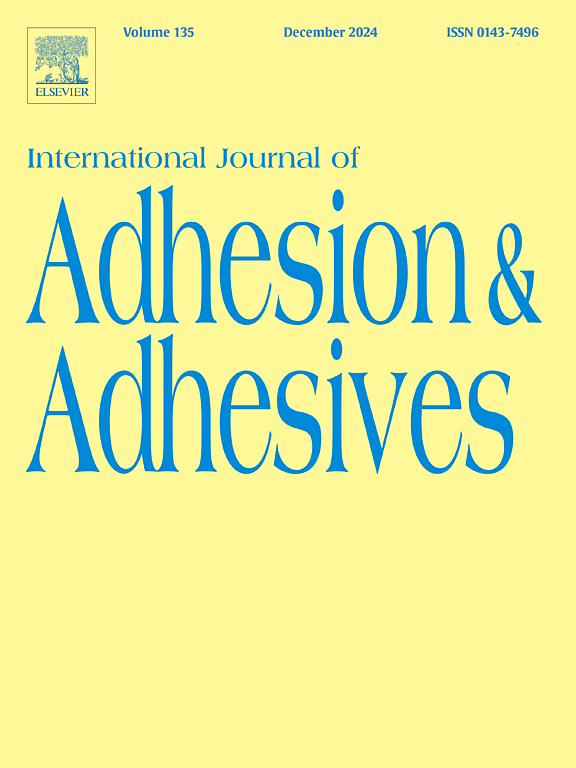Design and evaluation of a novel variable-length stepped scarf repair technique using a cohesive damage model
IF 3.2
3区 材料科学
Q2 ENGINEERING, CHEMICAL
International Journal of Adhesion and Adhesives
Pub Date : 2024-11-13
DOI:10.1016/j.ijadhadh.2024.103886
引用次数: 0
Abstract
The advantages of Carbon Fibre Reinforced Polymers (CFRPs) are well established, but repairing CFRP components remains difficult and costly, posing challenges for industries like aerospace. This paper explores the design, modelling, inspection, and testing of a Variable Length Stepped Scarf (VLSS) repair scheme for highly loaded composite structures. A fully nonlinear 2D Finite Element Model (FEM) is used to design the VLSS repair, predict failure loads and modes, and model adhesive cohesion and delamination. The model incorporates a validated progressive damage model, general contact, and both force and geometric nonlinearities. Two manufacturing techniques involving hard repair patches and glass beads to maintain a constant bond line are employed. A 3D FEM validated against repaired composite coupons under uniaxial tension shows excellent agreement with experimental data. The static strength repair efficiency is approximately 80 % of a pristine sample, with failure displacements at 87 %, and Hooke's stiffness at 102 % of pristine laminates. Cohesive failure at adhesive overlap edges is identified as the cause of stiffness degradation, confirming experimental observations. This study contributes to both composite repair modelling and repair design optimisation.
利用内聚损伤模型设计和评估新型可变长度阶梯式围巾修复技术
碳纤维增强聚合物(CFRP)的优势已得到公认,但碳纤维增强聚合物部件的维修仍然困难重重、成本高昂,这给航空航天等行业带来了挑战。本文探讨了针对高载荷复合材料结构的变长阶梯巾(VLSS)修复方案的设计、建模、检查和测试。本文采用全非线性二维有限元模型(FEM)设计 VLSS 修复方案,预测失效载荷和失效模式,并对粘合剂内聚和分层进行建模。该模型包含一个经过验证的渐进损伤模型、一般接触以及力和几何非线性。该模型采用了两种制造技术,包括硬质修补片和玻璃珠,以保持恒定的粘合线。根据单轴拉伸下的修复复合材料试样验证的三维有限元模型显示,该模型与实验数据非常吻合。静态强度修复效率约为原始样品的 80%,失效位移为原始层压板的 87%,胡克刚度为原始层压板的 102%。粘合剂重叠边缘的内聚失效被认为是刚度下降的原因,这与实验观察结果相吻合。这项研究有助于复合材料修复建模和修复设计优化。
本文章由计算机程序翻译,如有差异,请以英文原文为准。
求助全文
约1分钟内获得全文
求助全文
来源期刊

International Journal of Adhesion and Adhesives
工程技术-材料科学:综合
CiteScore
6.90
自引率
8.80%
发文量
200
审稿时长
8.3 months
期刊介绍:
The International Journal of Adhesion and Adhesives draws together the many aspects of the science and technology of adhesive materials, from fundamental research and development work to industrial applications. Subject areas covered include: interfacial interactions, surface chemistry, methods of testing, accumulation of test data on physical and mechanical properties, environmental effects, new adhesive materials, sealants, design of bonded joints, and manufacturing technology.
 求助内容:
求助内容: 应助结果提醒方式:
应助结果提醒方式:


